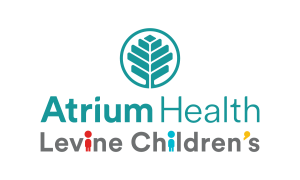CSP Team Note: We recently interviewed Dr. Joseph Loibissio with Atrium Health Levine Children’s Arboretum Pediatrics on pediatric headaches. We thank him for his time and expertise!
How common is it for a child to get a headache?
Most children will get a headache at some point during childhood, but it’s uncommon for children under the age of 5 to have headaches.
What could be causing headaches?
There are many reasons children get headaches. Infections, migraines, allergies and vision issues can all cause headaches. The most common is a stress (or tension) headache, which happens when the neck and head muscles tighten and twist.
What is the difference between a “normal” headache and a migraine?
Just because a headache is severe doesn’t mean it’s a migraine. Migraines are a specific type of headache that can feel differently for everyone. They’re usually caused by the tightening and widening of the blood vessels in the brain.
Boys are more likely to get migraines when they’re young, but these migraines don’t always occur with head pain. They might get stomach (or abdominal) migraines, which lead to stomach symptoms, including nausea, vomiting and pain.
Girls are more likely to get migraines during their teenage years. While migraines might get better for boys as they get older, they can get worse for girls. The migraines that girls often get are the classic type, which can start with flashing lights across their field of vision and lead to localized head pain, or pain that occurs in a small area on one side of the head. These headaches often happen with light and sound sensitivity and may last for several days.
Some migraines may also occur with unexpected neurological symptoms, including weakness and loss of feeling in the arms and legs.
How are headaches treated?
Most headaches get better with one or two doses of ibuprofen. Migraines will also often respond to ibuprofen if it’s given within 30 to 60 minutes after they start. If a migraine doesn’t improve with ibuprofen, it’ll usually get better by resting in a quiet and dark room and sometimes by drinking one caffeinated beverage.
If migraines don’t go away or get worse, sometimes several medications are needed and occasionally IV fluids and medication are required. Migraines that come back again and again often require doing something to prevent them from happening or worsening – this can include lots of fluids, supplements such as magnesium, daily preventive medication and by having a rescue medication plan. A rescue medication plan includes specific, immediate things that work for your child that can stop their migraine from getting worse.
Usually, patients with severe migraines – such as those that are frequent or include other neurological symptoms – may need imaging, including an MRI. If your pediatrician can’t help control your child’s migraines, they’ll refer you to a neurologist as the next step.
Are headaches more common in teens?
Headaches tend to be more common in teens than younger children for several reasons:
– Teens often don’t get enough sleep or water.
– They tend to drink more caffeinated beverages, including coffee and soda.
– They spend more time in front of a computer screen or on their phones.
– Teens also have more stress in their lives due to pressures from school, sports and relationships.
When should you call your pediatrician?
There are several “red flags” related to headaches which should prompt you to seek medical attention for your child.
Here are a few signs it’s time to call your pediatrician:
– Children under the age of 3 who have any headache
– Children under the age of 5, with headaches that occur more than once or don’t get better with ibuprofen
– Headaches that wake your child up at night or occur with a fever, neurological symptoms, vision changes, nausea or vomiting
– Headaches that don’t go away, limit your child from doing normal activities or occur more than once every 1 to 2 weeks
Levine Children’s
Facebook
Instagram
Twitter




